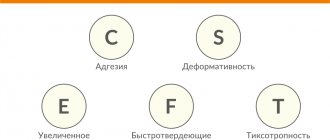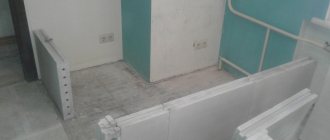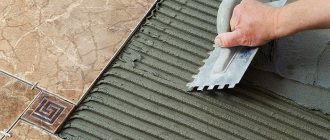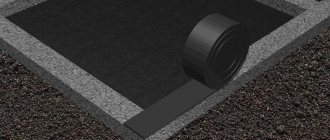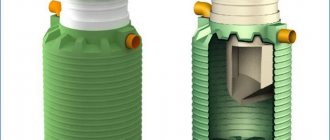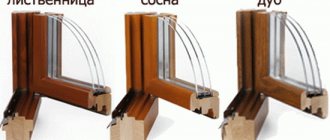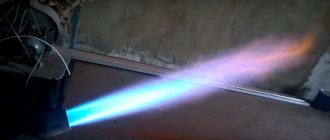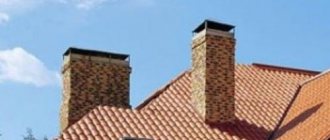Expanded polystyrene as insulation is well suited for protecting basements, facades, floors, ceilings, roofs, etc. from heat loss. The key condition for high-quality insulation is a properly selected adhesive for polystyrene foam, which should not contain substances that destroy its structure and have high adhesion to a smooth surface. There are 2 main types of compositions - for external and internal work. If in the first case performance qualities are important - resistance to UV rays, precipitation, withstand temperature changes (at least 100), then in the second - safety and absence of odors. Which offers are considered the best on the market and have earned the trust of users? We study the 2021 ranking.
| Category | Name | price, rub. | Customer Reviews |
| Best Styrofoam Adhesive for Exterior Use | Knauf Klebenspachtel | 380 | Dry mixture for preparing reinforcing and adhesive mortar with cement. Easy to use, sets quickly, no odor. |
| Tytan Styro 753 GUN | 420 | Professional adhesive foam. It sets within 2 hours, there is 15 minutes to adjust the slab. | |
| Ceresit CT 83 Strong Fix | 460 | The composition includes mineral fillers and polymer modifiers. Can only be used at positive temperatures. | |
| Bitumast | 1800 | Resinous bitumen for foundations, floors, plinths. Cannot be used for facade. | |
| Prospectors Teploizol | 339 | For additional fixation, the slabs must be secured with dowels after the glue has dried. | |
| The best polystyrene foam adhesive for interior work | TechnoNIKOL Professional | 259 | Professional mounting adhesive foam. Refers to universal compositions. Very high adhesion. There are antifungal supplements. |
| Ceresit Express CT 84 | 700 | Quick installation of insulation boards, no need to wait for drying. Installation of slabs and doweling can be done in the cold, and reinforcement when it gets warmer. | |
| Penoplex Fastfix | 350 | The secondary expansion is fixed; it will not be suitable for installation seams. |
Features of installation of polystyrene foam
Extruded EPS is a high-density foam material. It is this indicator that distinguishes it from ordinary polystyrene - polystyrene foam. The density increases during the production process when passing through the extruder, this seriously increases the thermal insulation characteristics of the material. The final slabs consist of polymer and small air bubbles.
Due to the smoothness of EPS boards, they have very weak adhesion to the adhesive composition. This is the main problem when gluing. It can be solved by selecting special adhesives that themselves have high adhesion to any surface. Also, some products can partially dissolve the foam top of the slabs by being absorbed into them.
The specifics of installing polystyrene foam boards are as follows:
- if the material was purchased as floor insulation, it is laid on an expanded clay pad or on a pad made of other low-density material and filled with concrete;
- to insulate the foundation, the slab must be glued to the concrete of the base and secured with mounting fasteners;
- material is laid on the roof, then a layer of bitumen is placed or PPS is laid between the ribs of the rafters inside the roof layers;
- When insulating the ceiling in an apartment on the top floor, polystyrene foam is laid on the attic side with glue, then concreted or covered with crumbs, gravel, expanded clay.
Scheme of application of various brands
The following key types of expanded polystyrene are produced, differing in density and other characteristics:
- PSB-S-15, the density of this brand of foam is up to 15 kg/cu.m.
- PSB-S-25, from 15 kg/cu.m. up to 25 kg/cu.m.
- PSB-S-35, from 25 kg/cu.m. up to 35 kg/cu.m.
- PSB-S-50, from 35 kg/cu.m. up to 50 kg/cu.m.
The thermal conductivity component of foam plastic, expressed in digital values, refers to the range 0.037 W/mK - 0.043 W/mK. The indicated value can be correlated with the thermal conductivity of air, which is equal to 0.027 W/mK.
Use of polystyrene foam PSB-S-15
Polystyrene foam PSB-S-15 can be used for insulation of house facades. This type of insulation is practically not used in construction. It is used in structures that are attached to structures. These can be open balconies or verandas that serve a decorative function. Using PSB-S-15 foam plastic, shapes for facades are formed, and this allows:
- frame the corners of the house, windows;
- separate floors by creating cornices.
What is PSB-S-25 suitable for?
Plates with a density of 25 are used to insulate the facades of a house. The standard is foam plastic, the thickness of which is 5 cm. This type of insulation is used for many purposes. Its thickness can be changed - this will depend on consumer preferences.
Polystyrene foam of maximum thickness can be used to insulate walls that are exposed to atmospheric agents. They can also be used to insulate walls, since such material perfectly prevents the appearance of fungus.
Based on the designation of the material, it is used in various construction structures, and this does not impair its quality characteristics.
Application of polystyrene foam PSB-S-35
Before choosing insulation of the required thickness, it is recommended to find out in advance how much gas pipe is available, because under no circumstances should it be covered, as this may disrupt the aesthetics of the appearance of the building. In this case, it is advisable to prefer PSB-S-35 material with a thickness of 5 cm over material with a density of 25 and a thickness of 10 cm, especially since their prices are practically the same.
Insulation with a density of 35 can be used to insulate the slopes of windows and doors, and the facades of buildings. As a rule, it costs twice as much as the same polystyrene material with a density of 25. With a thickness of 5 cm, it can be used to insulate non-residential structures and garages. With a thickness of similar insulation of 7 centimeters, it can be used for thermal insulation of residential premises.
Due to the normal level of density, it is possible to use a heat insulator with a minimum thickness, which does not imply a deterioration in the quality of insulation. If the polystyrene foam heat insulator turns out to be harder, then it can be used to provide ideal insulation of basement walls and foundations.
Selecting adhesive for extruded polystyrene foam
How to glue polystyrene foam? To fasten the slabs, you can use different means that have different components. But there are specifics to using mixtures. So, it is better to use one for gluing to a concrete base, another for attaching to a brick wall, and another for winter work. There are adhesives that combine the properties of fastening material and insulation and have low thermal conductivity.
Before purchasing, it is important to clarify that the product contains no substances that corrode polystyrene foam. This:
- acetone;
- alcohol substitutes;
- toluene;
- esters;
- other solvents.
The ideal option is to purchase specialized formulations, because their manufacturers have already taken into account all the important points. There are three main types of products that are suitable for gluing material. This is a plaster-adhesive mixture of different brands, polymer adhesives and bitumen glue (mastic).
People often use “liquid nails” in a bottle, silicone sealants, frost-resistant tile adhesives, drywall and tile products for gluing materials. Can I use them? Experts say that the use of such adhesives is possible, especially if additional fastening of the structure with dowels is planned. But the cost of the work can be much higher, so it is better to buy products designed for XPS.
Useful tips
Recommendations from experts will help you choose the most suitable adhesive composition and glue the insulation as firmly and efficiently as possible:
- Do not buy cheap glue produced by a dubious manufacturer.
- Pay attention to quality certificates.
- The glue sold on promotion may be expired - be sure to check the numbers on the packaging.
- The mixture should be stored in a dry place in pallets and sealed. If storage conditions are violated, the technological properties of the product will suffer. If saturated with moisture, it will become unsuitable for use.
- Do not dilute the hardened mixture with water, as this will cause the surface to subsequently crack and lose the properties of the product. Any unusable material must be discarded.
- During fixation, air circulation must be ensured indoors.
- Before installing insulation on metal surfaces, it is recommended to cover them with burlap. This will make it easier to attach the slabs and improve the quality of the connection.
It is better to insulate a house in the warm months of the year, when the weather is good outside, since it is difficult to work in rain and wind.
Plaster and adhesive mixtures
Such mixtures are suitable for gluing EPS to plasterboard, brick, concrete, and cinder block bases. You need to breed them yourself, since they are sold in the form of dry mass. The composition includes mineral components, plasticizers, Portland cement, and a number of auxiliary additives. The mixtures are suitable for exterior work and interior decoration; they will hide all the unevenness of the base. The downside is the need for preliminary deep priming of the surface.
Ceresit CT-83
"Ceresit ST-83" is widely used for pasting building facades. It has excellent frost resistance and adheres well to wood, concrete, plaster, and brick. After drying, ST-83 is breathable. Consumption per 1 sq. m is small, because it is enough to apply the mass 1 cm thick (this is done with a notched trowel).
The company also produces high-quality adhesive Ceresit CT 85, which is considered universal. High strength and ductility are due to the polymers included in the composition. But this product costs an order of magnitude more than the previous one, so builders prefer ST-83. Both materials are applied in intermittent stripes, slightly retreating from the edge for better air release.
Bergauf ISOFIX
Bergauf Isofix glue is a mixture of minerals, fillers, cement, sand, plasticizers, and special additives. Can be used for any indoor and outdoor use. Average consumption – up to 5.5 kg/sq.m. m, a thin layer (3 mm) is required. After dilution, the mixture is viable for 1.5 hours, it is possible to change the position of the plate on the wall within 25 minutes. The glue is sold in 25 kg bags and can glue extruded polystyrene foam to all types of surfaces.
How to properly glue polystyrene foam
Before proceeding with the installation of PPS slabs, it is necessary to evaluate the quality of the surface.
If there are differences and irregularities
You will need to use a primer and putty any existing flaws. Make sure that the composition of the putty mixture will not conflict with the adhesive.
Requires cleansing of previous deposits
Oil-based paint, mold, rust, salt and grease deposits all reduce the adhesive properties of the surface.
Experts advise conducting a test to check the adhesive abilities of the working surface. You will have to sacrifice one slab, cutting it into cubes measuring 10x10 cm, and gluing them in various places where thermal insulation is planned. Tear them off after 72 hours - if the base of the cube along with the glue remains in place, and only pieces of polystyrene foam come off, you can begin installation in full.
Once you have eliminated all sorts of shortcomings and conducted a test, and everything you need has already been purchased, you can begin.
If you have chosen polyurethane foam adhesive as a fastening element, all that remains is to apply it to the slabs and glue it using a level. Apply glue in the following ways:
- envelope;
- five parallel lines along the width of the slab;
- a rectangle encircling the contour of the slab, complemented by a zigzag inside or a horizontal line.
And those who decide to work with dry mixtures will have to sweat a little. First you need to mix the solution in accordance with the manufacturer's instructions.
Various methods of applying glue to PPS
This glue can be applied in several ways:
- beacon - recommended for wall differences of up to 1.5 cm. Stepping 2 cm from the edges, draw lines along the perimeter of the plate, scatter 5-8 points of contact in the center and on the remaining area, 10 cm in diameter and 2 cm thick;
- striped - stripes 5-6 cm wide are applied at each edge of the slab with 2 cm indentations from the edges, and a horizontal line is drawn along the slab;
- continuous coating with mortar, with differences up to 0.5 cm.
The thickness of the strokes should be at least 2 cm, width 5-8 cm, maintaining a 2-3 cm distance from the edges. To avoid air locks, it is necessary to leave gaps between the strips applied along the contour of the polystyrene foam board. After pressing, the mixture should be distributed over the slab and occupy at least 40% of the area.
Once the adhesive is applied to the insulating boards, they are installed end-to-end in the design position, leaving no gaps. The permissible distance between the plates is 2 mm. If the gaps are large, they need to be filled.
Plastic dowels or umbrellas are not the main means of fastening; they are used as a supplement. They are inserted into polystyrene foam after the foam or solution has completely dried, leaving the cap flush with the surface of the slab. The rod must penetrate the solid layer of the wall, not counting the plaster, at least 4 cm.
Polyurethane products
Any polyurethane adhesive is seriously different from the dry mixtures described above. They are often called “glue-foam”, “foam-glue”, because the compositions are sold in cylinders, and to use them you need a construction gun. They are used in the same way as polyurethane foam. Polyurethane adhesives for EPS are usually used for exterior applications; they have strong adhesion and are easy to use. The products dry quickly, are economical, do not react to changes in weather, and are frost-resistant.
Tytan Styro 753 GUN
Produced in 750 ml bottles, suitable even for interior work. This polystyrene adhesive is applied in thin strips, then the material is immediately applied to the wall. It can attach EPS to a base made of plaster, concrete, wood, mastic, cement, and is capable of reliably gluing sheets of expanded polystyrene together.
Adhesive foam "TechnoNIKOL"
TechnoNIKOL adhesive is widely used for fastening polystyrene slabs to foundations, walls of houses, roofs, in basements, and on floors. The gaps between the insulation boards are also sealed with glue. The adhesion of the product is high even where there is mold, high humidity, and fungus.
Glue "Penoplex" Fastfix
The product is considered effective for fastening EPS slabs to bases made of concrete, aerated concrete, brick, and ceramic blocks. Packaged in standard 750 ml bottles. It is characterized by high strength, the quality of adhesion to the base is one of the best among analogues. The adhesive is incompatible with bitumen compositions, polyethylene film, and Teflon.
Polystyrene gluing technology
To glue different brands of EPS boards, bitumen mastics or cement-based adhesives or polyurethane foam can be used. The glue base should not contain gasoline, ethers, acetone and other organic compounds - they damage it, literally dissolving it and leaving holes in the areas of application. In addition, the choice of adhesive for polystyrene foam depends on what exactly is being insulated: the floor of the building, its walls or ceiling.
In new low-rise buildings, it is recommended to design hollow walls and lay EPS boards inside them - there will be savings on adhesive and reinforcing elements. Work on installing thermal insulation with extruded polystyrene foam should be carried out in dry weather at an ambient temperature of at least +5 °C. The only exception is polyurethane foam.
When insulating the walls or floor of a building, polystyrene foam adhesive is the best choice. It is used simultaneously for gluing and reinforcement. Gluing of EPS boards begins from the bottom, laying them in 1 row. Next, they are fastened with a T-shaped seam dressing, close to each other and to the slabs of the adjacent row. It is unacceptable to re-install or change the position of the plate after 5 minutes after installation. Eps boards are fixed with dowels. For use in brick or concrete walls, take a dowel with a spacer of 60 mm, for walls made of cellular concrete and perforated brick - 90 mm. Quantity per sheet: 4-6 pcs., in the corners of the building up to 8 pcs. The reinforcing mesh is fixed tightly over the applied layer of glue; an overlap of 10 cm is made at the joints of the mesh pieces. After the first layer has hardened, the second is applied. The total thickness of the reinforcement must be at least 3 mm. Corner areas are protected from damage by aluminum corners. The final plaster layer is applied 3 days after reinforcement.
Bitumen adhesive Bitumast
Bitumast mastic is similar in properties to a plaster-adhesive mixture, but includes bitumen, which plays a binding role. The advantage of the glue is its excellent compatibility with extruded polystyrene foam; it adheres to the material for a long time without any complaints. The product also has waterproofing properties and protects the joints of external walls from moisture.
You can easily mix Bitumast, it takes a couple of minutes, you don’t need any special tools (you don’t even need a mixer). There is also no need to warm up Bitumast before use. The consistency is liquid, so apply in a thin layer. There is a significant disadvantage - the mastic sets slowly, and you will have to keep the EPP sheets from slipping for a long time.
Gluing “relatives” together
Bonding foam and extruded polystyrene foam. Sometimes during the production of thermal insulation it is necessary to glue foam insulation onto polystyrene foam. The same compositions are used for this. Since the source materials of both insulation materials are the same. Before gluing extruded polystyrene foam, treat its glossy surface with a needle roller to increase adhesion with the composition used.
Selecting the correct adhesive for polystyrene foam based on the specific situation will ensure reliable fixation of the slabs without loss of insulation quality.
Polyvinyl acetate adhesives
Polyvinyl acetate is a transparent, elastic polymer produced by the polymerization of vinyl acetate. This glue is considered universal because it can bond any hydrophilic materials. These adhesives do not rot and prevent the appearance of fungus.
"Moment Joiner"
Universal polyvinyl acetate adhesive, widely used in repair work. It is packaged in containers of 0.1-30 kg, so you can easily select the required weight. “Moment Joiner” dries quickly, does not corrode surfaces, and holds expanded polystyrene sheets very reliably.
PVA-MB
Do not confuse the product with regular PVA glue. This material is a reliable polyvinyl acetate emulsion with a number of plasticizing additives in its composition. PVA-MB dries more slowly than Moment, but the seam is considered stronger. You should not buy glues that are too cheap; PVA is often counterfeited.
Available to everyone
PVA is one of those glues that answers the question: how to glue foam to foam. It is one of the most common adhesives used at home in the manufacture of crafts, for interior and exterior work. Fastening the foam must be done at positive ambient temperatures. The use of protective equipment is not required.
To use this gluing method, glue is applied with a brush to both surfaces to be glued. In case of increased porosity, apply glue, filling the voids, and let it dry. Perform gluing after re-application. Ensure initial tight pressing and subsequent fixation of the position of the plates.
Other gluing methods
Some craftsmen try to use “homemade” methods for attaching polystyrene boards using other methods. This is not always reasonable.
Polyurethane foam
Foam is used to fasten any surface, including EPS. The cost of foam is often cheaper than similar glue in cans. But the disadvantages of this method are obvious:
- slow setting with the base - slabs lying vertically will constantly slide;
- the glue contains special adhesion-improving additives, which makes it more reliable for tearing than foam;
- polyurethane foam tends to grow in volume, and when constructing polystyrene foam this can play a bad role;
- foam peels off the wall faster than glue.
The advantage of foam is the ability to fill the seams between the slabs, so it can also be useful in installation.
Characteristics and consumption
According to experts, the most economical composition in terms of product consumption is polyurethane foam and paintable adhesive putty for outdoor use.
To calculate the expected consumption of the adhesive composition, you need to have an idea of the average amount of its consumption. This value directly depends on the product, its type, as well as manufacturing technology.
On average, dry powders have a consumption of approximately 500 grams per 1 m2 of material. For a bitumen mixture, this figure ranges from 800 grams or more per 1 m2. Polyurethane adhesive compositions are notable for the fact that they have the lowest consumption - 1 can is usually enough for 10 m2.
General information
Characteristics of penoplex
Penoplex can also be called extruded polystyrene foam. This is a popular material in the construction market. It has high thermal insulation properties. It is widely used for insulating facades and roofs, as well as for interior work. The production of expanded polystyrene began in 1941 in the USA. It obtained its technical properties thanks to the most complex processing using extrusion.
Feedstock is placed into the reactor and subjected to high temperatures and pressure. As a result, the existing components are saturated with a gaseous component. When the pressure is released, the mass begins to expand, forming foam. At the same time, the temperature decreases, which turns the substance into a solid. The mass is passed through extruders. It becomes like multilayer plastic. Most of the extruded polystyrene foam is occupied by air, purified from water vapor and having low thermal conductivity.
High production technology makes it possible to obtain a material that does not allow gases and water vapor to pass through, even if the installation of penoplex was carried out incorrectly. Closed cells of penoplex measuring 0.1–0.2 mm are filled with liquid when exposed to moisture. The water does not pass further and remains in the pores.
Advantages and disadvantages of penoplex
Extruded polystyrene foam
EPP does not deform and serves reliably for a long time. He is not afraid of temperature changes. It does not lose its properties from – 100 to + 75 degrees. It can be installed even in the harsh North.
The antiseptic properties of polystyrene foam lie in the fact that it is not at all susceptible to rotting. Working with him is a pleasure: installation is easy. Penoplex slabs do not cause allergic reactions upon contact with it.
Penoplex
The material is light and has a small thickness from 20 to 150 mm. The price-quality ratio pleases consumers. Extruded polystyrene foam is inexpensive and can be purchased by many who decide to renovate a private home or build a new residential building.
Comparison results
But extruded polystyrene foam also has a number of disadvantages: it is susceptible to combustion, is susceptible to exposure to infrared rays, and at temperatures above + 75 degrees it releases substances harmful to human health. One of the important disadvantages of expanded polystyrene is its destruction under the influence of solvents and abrasives. Therefore, a number of requirements are imposed on adhesives for extruded polystyrene.
What kind of glue should be used for extruded polystyrene foam?
Adhesive for penoplex must have the following qualities:
- moisture resistance;
- resistance to temperature changes;
- high adhesion;
- do not emit harmful substances;
- do not be too liquid so as not to leave drips.
Prohibited components of polystyrene foam adhesive
Penoplex adhesive should not contain certain components that negatively affect the structure of the materials, corroding it.
The composition of the adhesive for extruded polystyrene foam should not include:
- solvents;
- formaldehyde and formaldehyde;
- aromatics such as benzene and toluene;
- polyester and coal tars;
- flammable substances: gasoline, kerosene, diesel fuel.
Types of fixation
In order to fully take advantage of all the potential and benefits of insulating a building with penoplex, it is necessary to properly fix it on the working surface. There are two main methods of fixation:
In the first case, it is assumed that holes are drilled in the wall to a certain depth, followed by driving in special plastic dowels with a wide head. The plastic base is then securely fixed using steel pins, which act as a core, expanding the plastic shell from the inside.
Apart from the imaginary advantages of the reliability of this type of fixation of penoplex panels, this method does not have any other advantages. But as disadvantages, obvious points can be noted:
- the process is very labor-intensive and requires a special tool, at least a drill with impact mode or a hammer drill. You often have to drill holes in concrete, so it's worth having at least a couple of spare drill bits;
- constant noise during operation. First the sounds of a hammer drill, and then the blows of a hammer when dowels and steel cores are driven in;
- high consumption of material (meaning fasteners). To properly fix a small foam board measuring 60x60 centimeters, you need at least 5 dowels (4 at the edges and at least 1 in the center). The larger the panel size, the more fasteners may be needed;
- high cost of work. One dowel is inexpensive, but considering their number, the amount adds up to a decent amount, especially with a large insulation area.
Types of adhesives
The abundance of building mixtures has led to a dilemma: what and how to glue penoplex to the walls correctly so that the thermal insulation effect is maximum. To make a choice, you should study the characteristics and operating instructions for each type of glue. The possibility of using the composition in a particular situation also depends on the type of insulated surface.
Mineral
Mineral-based dry mixtures are considered universal, so when the question arises of how to glue penoplex to a concrete wall, gas silicate blocks or brick, you can safely give preference to this type of glue
It is important to follow the recommendations of professionals on how to glue penoplex to the wall. To do this, use a toothed grater.
The use of such a device allows you to increase the adhesive ability of the insulation. The composition must be diluted according to the instructions. Mineral glue is used sparingly, since it must be applied in a thin layer. An advantage of mineral compositions is considered to be increased frost and moisture resistance. After drying, its volume does not change, which eliminates subsequent shrinkage.
Polyurethane
It is convenient to attach penoplex to the surface with polyurethane glue, since it is sold in ready-to-use cylinders. It is enough to connect them to the gun and apply them in a zigzag pattern to the insulation. The composition sets quickly - within 30 seconds, complete drying occurs after 15 minutes.
What is the best way to mount it?
The set of consumables and necessary tools will depend on the chosen mounting scheme and on what can be used to glue Penoplex to the concrete wall.
The most common and well-proven in practice are options for fixing insulation using:
- bitumen-polymer mastic;
- disc-type dowels;
- polyurethane foam.
Let's look at the possible options in more detail.
Mastic
It is considered the most practical and budget-friendly slab fixer. First of all, it is used for thermal protection of the basements of houses with prolonged high humidity.
Bitumen-polymer composition
Refers to materials that are resistant to the effects of reagents that may occur during finishing work and other harmful natural factors.
The adhesive is supplied in the form of tubes and is inserted into a sealant gun. It is applied in the center and at the edge of the sheet along the perimeter, and the grooves are also carefully coated with it. The performer presses the sheet against the surface for a short time, after which the insulation adheres independently, and final fixation occurs in 1 hour.
Dry mixes
This is a reliable and simple option for fixing Penoplex to concrete walls. The mixtures are diluted with water according to the manufacturer’s recipe using a mixer attachment for an ordinary electric drill at low speed.
The glue is applied with a notched spatula and the grooves are carefully filled with the material. After applying the adhesive mass, Penoplex is pressed against the walls for 1 minute.
Adhesive foam
It performed very well when performing work on a smooth concrete wall, since it has great adhesion. The foam is applied exactly along the perimeter of the slab. Some craftsmen apply part of the fixative to the center of the sheet to increase adhesion.
Disc dowels
Another popular fixer for Penoplex, usually used for houses with uneven facades or large areas.
To work you will need:
- Boer;
- hammer drill;
- hammer.
Holes are drilled using a hammer drill, with a recess at the base of approximately 50 mm. The holes are filled with simple construction foam and plate-type dowels are driven in. Fungi should not be allowed to protrude above the insulation. You need 5 pieces per sheet. It is allowed to fix adjacent sheets with 1 dowel.
Polyurethane foam
A fairly popular method that ensures reliable fixation of Penoplex slabs. Apply it with a mounting gun, holding the slab until it fully adheres to the walls. The volume of such glue increases over time and breaks down, for this reason this technology is not recommended for external installation of insulation.
Liquid Nails
They are rarely used because they are expensive fasteners and therefore are purchased for small areas. For this mounting option, the wall is first carefully leveled and primed.
The glue is distributed using a construction gun along the center and edges of the slab. After applying the glue, it is pressed for a few seconds, which is enough to attach the structure.

